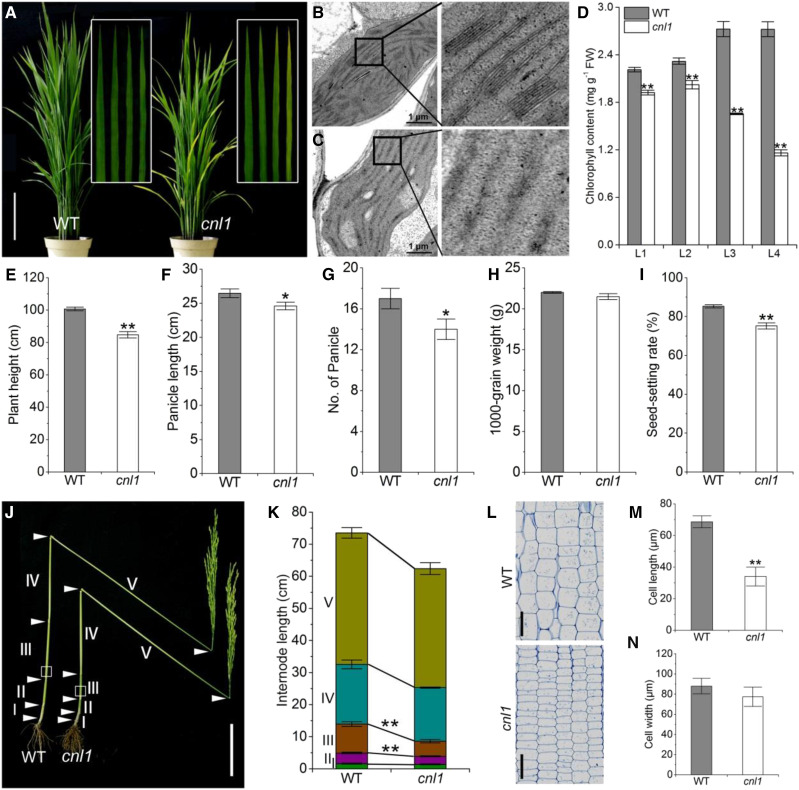Figure 1.
Phenotypic characterization of cnl1. A, Wild-type (WT) and cnl1 at the tillering stage (45 d after field transplanting). Insets show magnified views of the four leaves (L1–L4) from top to bottom of wild type and cnl1. Bar = 20 cm. B and C, Chloroplast ultrastructure in mesophyll cells of L4 in wild type (B) and cnl1 (C) in A. D, Chlorophyll contents in different leaves of wild type and cnl1. L1 to L4 represent the four leaves shown in A (from left to right), respectively. E to I, Major agronomic traits of wild type and cnl1. J, Comparison of main stems from wild type and cnl1. Arrows indicate the node positions. Bar = 10 cm. K, Internode lengths of main stems in wild type and cnl1 at the mature stage. L, Longitudinal sections of the corresponding parts of internode III from wild type and cnl1 as marked by the white boxes in J. Bars = 100 μm. M and N, Comparison of cell length (M) and cell width (N) of internode III in wild type and cnl1. Data are means ± sd (n = 5). Asterisks indicate significant difference by Student’s t test (**P < 0.01 and *P < 0.05).

